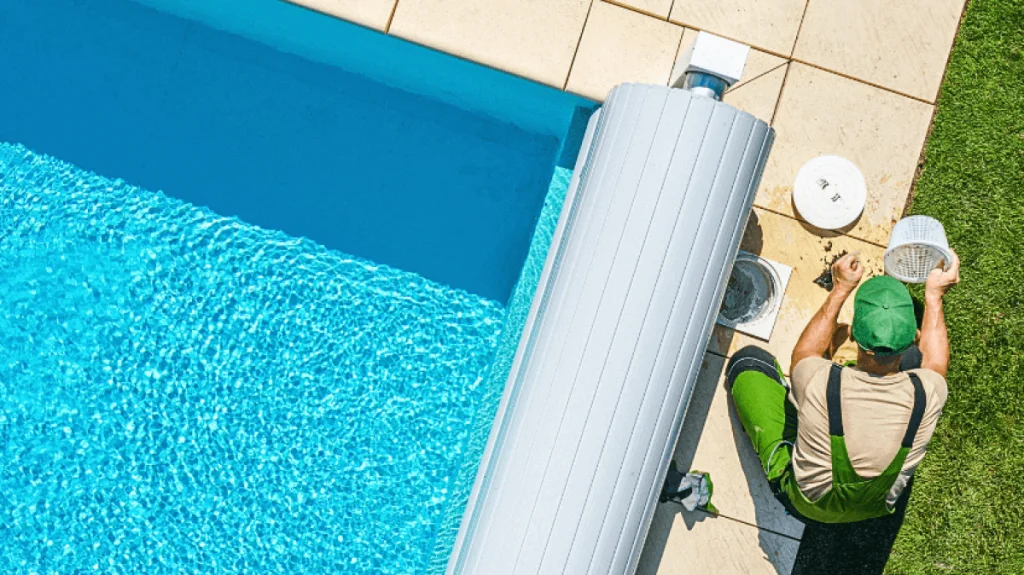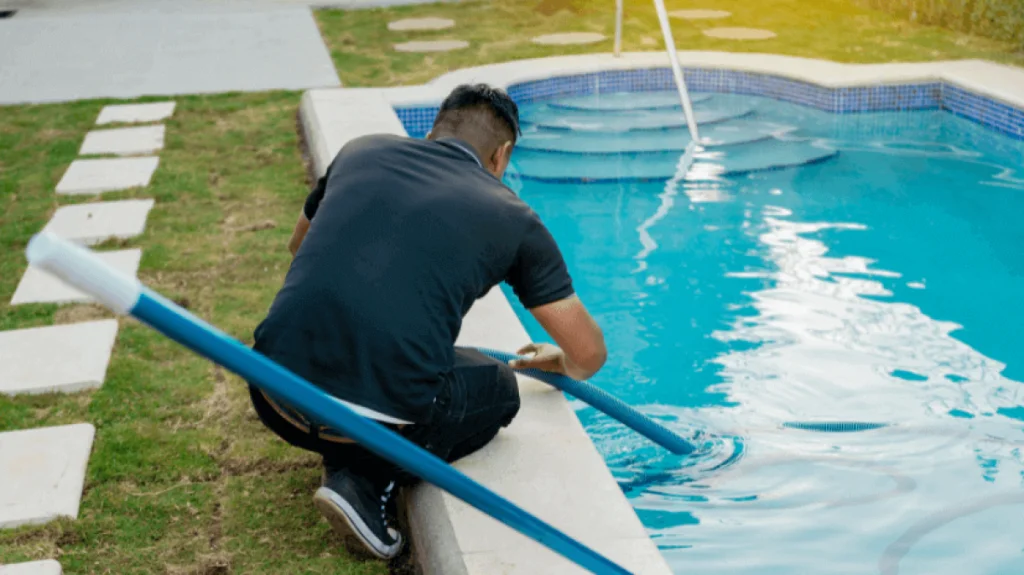Doesn’t sand in the pool last ever? How long does pool filter sand last, and why should there be a need to change the sand in the pool filter? Well, yes, the sand in your pool filter last forever, but with time, it loses its potency as a filter media. If you see the sand in the sand filter with the naked eye, you’ll know it looks like the old regular one, and the grains have just become rough. This roughness is filtering components.
Though inexpensive, efficient, and low-maintenance, pool filtering is always the goal. Also, If you want to ensure your filter performs as it should, you should spend only some time and investment on it. That’s the reason you always have a sand pool filter in the first place. You rarely find a clog in them; they are easy on your wallet and back and perform well. So who doesn’t love the crystal clear water and the maintenance when you’ll need to swap out the sand once a few years?
Through layers of sand, sand water pushes your pool water which provides filtration. As the water passes through the filter, the sharp edges of the sand grains act as a trap for contaminants. Now you got a few options, so start by deciding which sand you’ll use. Learn when to change sand in the pool filter and what’s the best time for it so you’ll not battle anymore with the cloudy and dirty water. Once you learn how to tackle it change your sand in a pool filter and start swimming quickly.
How Often To Change Sand in Pool Filter?
Do you know your pool sand can go for years without a change- but all of this depends on usage. We recommend you replace your filter media sand after every three to seven years. It’ll not only keep the low stress on your pool system but also filter your pool water optimally.
The more important thing to remember is that when your pool often clouds up, it’s time to change your sand filter; due to this cloudiness, your pool requires more often shocks.
How to Tell If Your Pool Sand Needs Changing?
Now the question is how to tell if the pool sand filter needs changing. Simply there’s no rocket science in knowing about changing your sand filter. As with the age pool filter, sand gets better, but then after sometimes it eventually declines. Its timespan is short, just three to five years. Contaminants build up in the sand over the years. But the first couple of years enhances the sand filtering ability; the build-up of contaminants on the sand act as a filtration for the water that is being filtered.
However, all that extra gunk eventually accumulates, so the filter becomes clogged. The weathering of the sand impairs its ability to collect further contaminants. That means when your filter’s efficiency decreases, so does your pool’s water quality.
When pressure and backwash return to a high rating quickly, and water can’t pass through gunked-up sand, it’s an indication to completely change the sand or replace sand from the pool filter. However, 3 to 5 pounds is normal for your pressure, but when the number hovers around 20, it’s a clear sign that you need to change a sand filter.
As you can’t use old sand for your pool filter even, don’t try to add normal sand to your sand pool filter mistakenly because it’ll not filter your water. However, you’ll end up destroying your entire filtration system.
Steps to Change the Sand in Your Pool Filter
After determining why the water is cloudy, get ready your things together and start changing the sand in the sand filter. You’ll astonish at how easy this task is.
The materials you’ll need:
● Flash Light
● Garden hose
● Screwdriver
● Pool filter sand
● Duct tape
● Chemical mask
● Utility knife
● DE powder
● Shop vac
● Hacksaw
● Backwash hose
1-Drain The Filter and Turn The Pump
Turn off the pump and filter but do this early enough; if everything is disconnected, the pump won’t kick on.
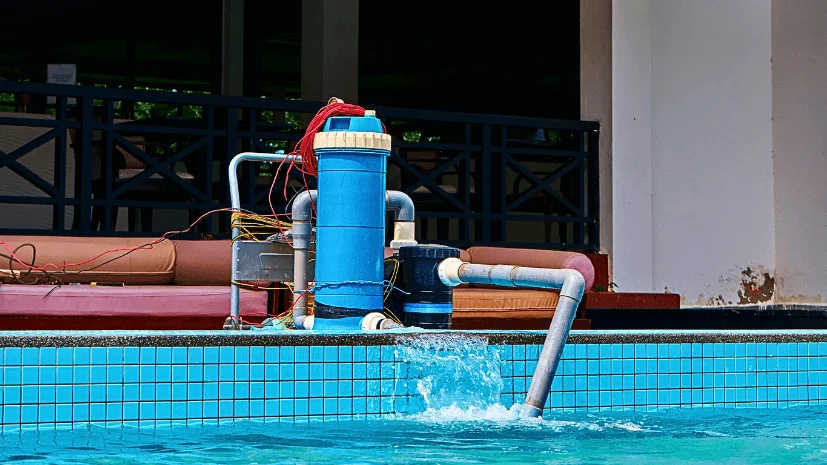
However, the dry pump can burn out if you kick it out at that moment. So from the bottom of the filter tank, remove the drain plug and drain all the water. You can do this step in the morning, as draining the filter tank may take time, so do this in the cooler evening and finish the rest of the job.
2-Disconnect Multiport Valve
It’s turn to remove hoses and pipes that are connected to multivalve pipes. If your valve is hard-plugged with PVC pipe, you’ll have to cut the pipe. Consider hiring a pro if you’re uncomfortable doing this.
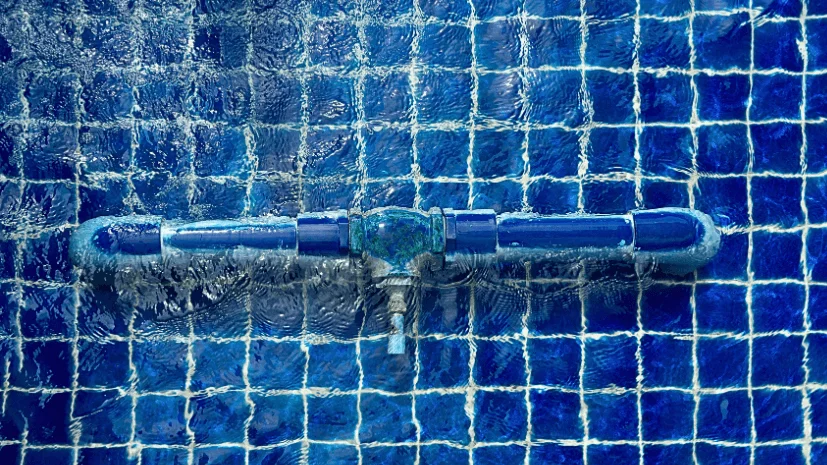
After the pipes can be cut and union fittings can be installed so the next time you have to uninstall a pipe fitting, so no hacksaw will be required. After this, with the help of a screwdriver, remove the clamp and collar attached to the tank’s valve. Pull up and gently twist the multiport valve to remove it.
The valve has laterals branching spreading in the sand due to the pipe attached to the valve. You should take care to avoid breaking the laterals, as the combination of sand and twisting can cause them to break.
3-Covering Sand Pipe
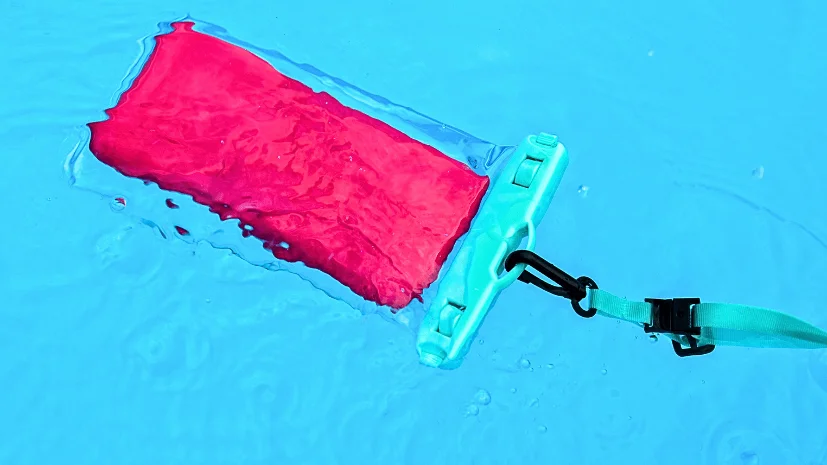
You can see an open pipe where the valve is removed. To protect the sand from getting inside protect, cover it with duct tape. If you don’t do that, then the sand will get flushed into your pool once you start the pump again.
4-Remove Sand
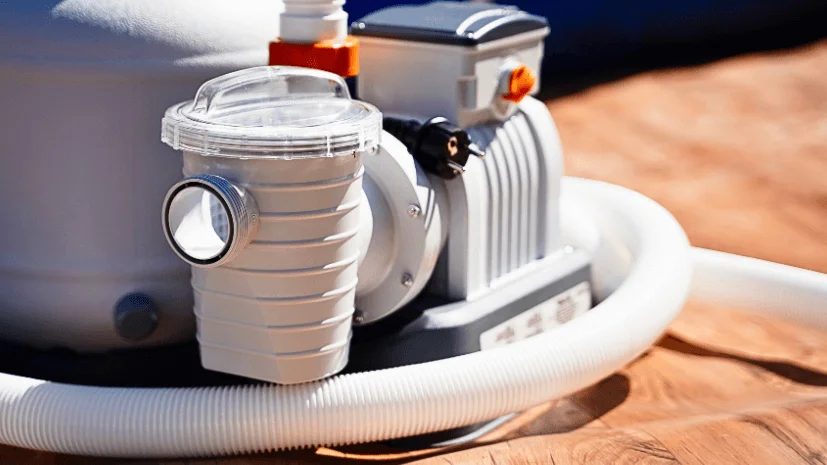
To stick out the old sand, use the shop vac. If you cannot do that due to back pain, or you don’t have a shop vac, scoop out the sand with the plastic cup by hand. But it’s better to invest in a shop vac, as it’ll minimize your several-hour tasks, and you’ll get help to do other handy jobs with the help of the shop vac.
5- Withdraw the Pipe and Lateral Assembly
Turn the lateral pipes upwards, then pull the lateral assembly and pipe effortlessly out of the remaining sand. The laterals should be inspected for damage and replaced if they seem broken or worn out.
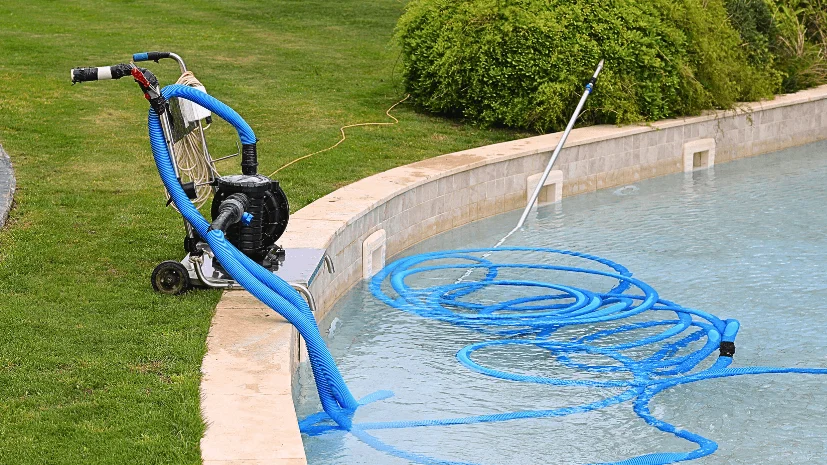
It is recommended that clogged laterals be soaked for a few hours in a cleaning solution, rinsed thoroughly, and then reinstalled.
6-Fill Your Tank Halfway With Water
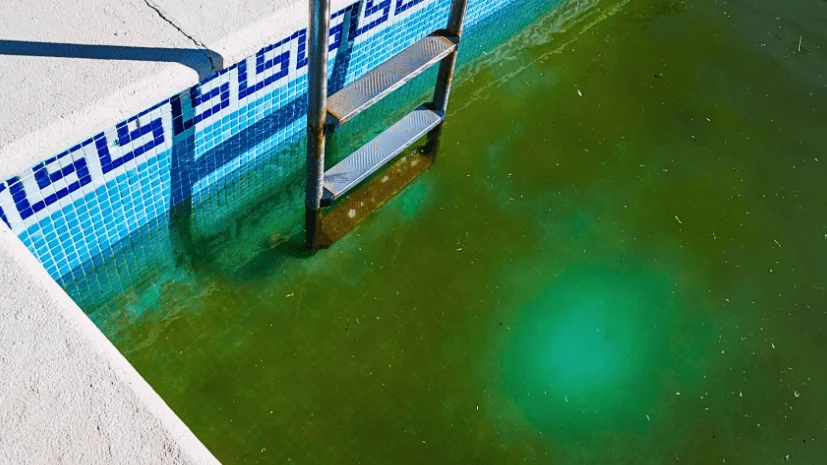
In the tank, replace the drain plug. Fill the tank by inserting the hose into the tank. While the tank fills approximately halfway, position the standpipe and the laterals and secure them in place. A cushion of water can be added to protect the laterals from the impact of sand falling by adding water prior to the replacement sand.
7- Add Fresh and New Sand
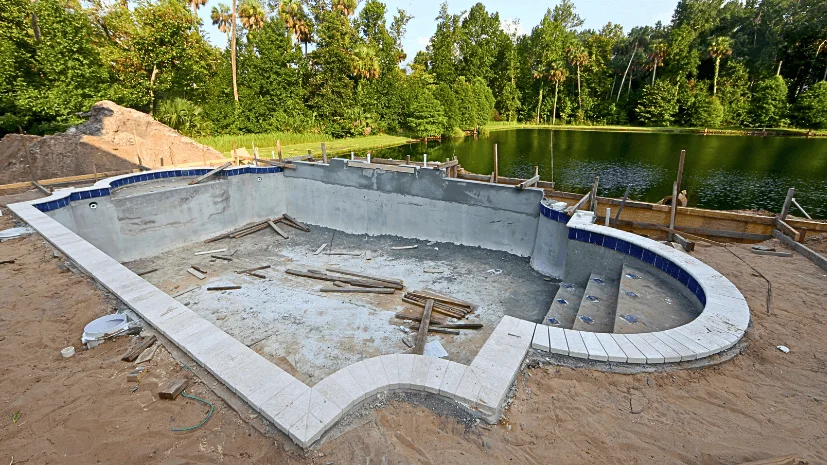
To avoid dust allergy, put your mask on. On the sandpipe, check the duct tape and, if needed and more. With the utility knife, slice open the bag while holding one corner over the tank’s opening. Relax and have a fun moment watching the sand drain into the tank… But don’t hang loose too much as you’re holding a 50lb sandbag. At a time, add one bag, pouring slowly into the tank so it’ll not spill everywhere.
Don’t forget to use only pool filter sand or substitute it otherwise, you’ll ruin your filter.
8-Reassembling the Connection and Fill the Tank
After adding all the sand to the tank, add the water to it. Consider replacing the collar, multiport valve, and hoses and pipe. Make sure to snug and secure all the fittings.
9-Rinsing and Backwash the Filter
After switching off the pump, to the backwash setting, rotate the valve handle, and then turn on the pump. Run the pool for a couple of minutes to flush out the impurities in the water and finer the sad particle after it’s fully primed.

Also, ensure your pool water exits at the right place to protect yourself from inconvenience. Turn the pool pump off once the backwash water runs clear and clean. Now turn on the pump switching the multiport valve to rinse. You’ll see the water in the sight glass clearing out instantly.
10- It’s Time to Enjoy
Turn the valve to filter and shut the pump off, then again turn back on the pump and check the pressure gauge. It’ll be your filter’s normal running pressure. To remember, it writes it down somewhere.
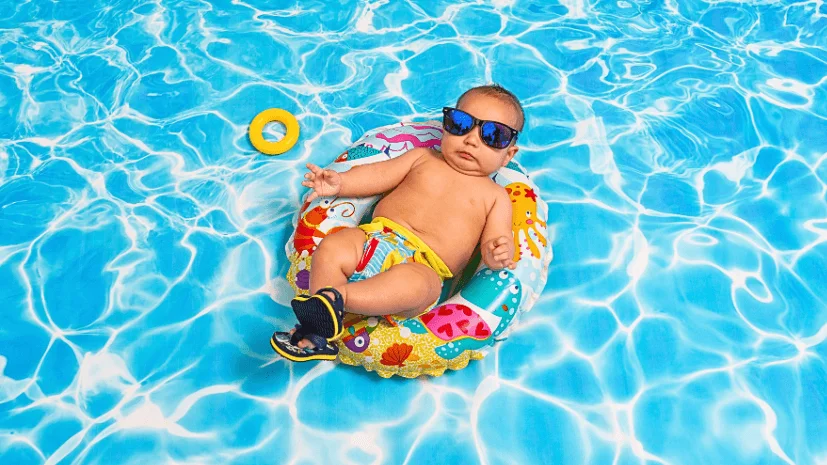
When you do the pool’s usual maintenance, check the gauge. Backwash the filter when the pressure is above ten psi. A pressure gauge used as a backwash indicator protects you from backwashing and removes debris and dirt for the proper function of your sand filter.
Risks of Changing Your Pool Filter Sand Too Often
Have you ever thought what’re the risks when changing pool filter sand?
If you replace sand filters too often than necessary, the components in the filter will break. However, you should be extra cautious while changing the sand from the pool filter because you may damage the lateral and multiport valves. The long you’ll not replace the sand, the long chance to not get the wearing tearing of your filter.
Furthermore, if you damage the filter parts, especially the standpipe or laterals, it’ll become common for you to see your pool filter blowing out sand and leaking sand into the pool.
Tips for Prolonging the Life of Your Pool Filter Sand
Our tip of the day will prolong your pool sand filter life if you follow it. Once a month, you need to backwash your filter to prolong the life of the sand filter. This will help clear away particles trapped in the filter, which wear them down faster. Some other tips are as follows to get the most life out of your sand filter.
● Regular Inspect of Your Sand Filter
Inspecting the filter regularly for signs of damage, such as fraying, tears, and flattened pleats, is advisable. Before they become a large problem, you can identify it timely. To extend the life, you can also replace or clean your filter.
● Efficiently Run Your Sand Filter
Running your filter each day with time and speed consideration will help you maintain your sand filter’s life span. It’s recommended to run a pool filter for about eight to ten hours, depending on the pool and filter type.
● Your Skimmer Should Be Clean
Cleaning your skimmers regularly will prevent the filter from becoming clogged with debris. Your filtration efficiency will be reduced due to the clogged filters.
FAQs About Sand Changing in Pool Filter
Q: Can I reuse the existing sand after backwashing?
Reusing old sand in your filter is not recommended, as it will not be able to filter water after 3-5 years effectively.
Q: Is it necessary to change the entire sand bed, or can I add new sand on top?
Tipping the pipe to prevent sand from entering the laterals and clogging them is necessary. Pour the sand slowly into the pipe while keeping it in the centre.
Q: Can I mix different types or grades of sand in my filter?
In pool sand filters, sand is used to trap dirt and debris. A special grade of sand is used in these filtering systems to ensure that the grains of sand are of the correct size.
Q: How do I know if my sand filter is functioning properly?
Dirt should be drawn into the skimmer basket when your pool filter functions properly. You may have a problem with your pool filter if it is not.
Conclusion
There’s no chance to make a pro-choice while choosing filter sand. So it’s important to choose the best one for your pool factors depending on whether the chloramines are an issue or the water is hard. We shared the best idea of how and when to replace the sand in a pool filter.
But once you follow these steps, you must keep an eye on your filter’s optimum efficiency for as long as possible. Strong durability, easy to install, and 65 GPM Flow; who would not love to buy a VEVOR sand filter with these exceptional qualities? Get crystal clear water in no downtime with VEVOR’S 24-inch sand filter.

